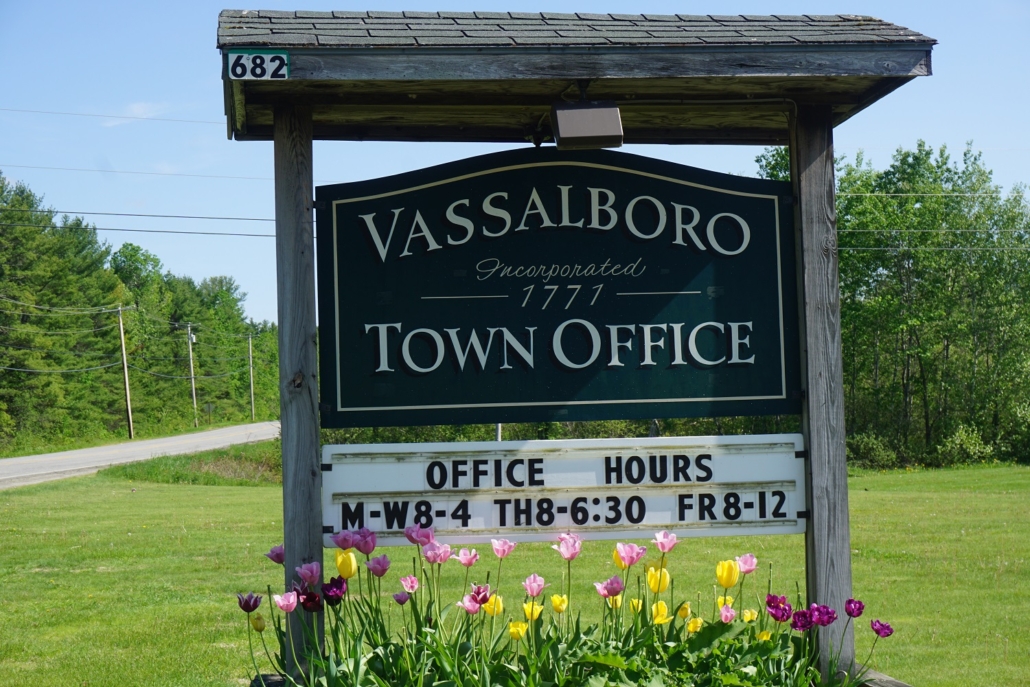VASSALBORO: Energy application incomplete; action postponed
 by Mary Grow
by Mary Grow
At their July 7 meeting, Vassalboro Planning Board members found that Longroad Energy Management’s application for a solar farm at 2579 Riverside Drive (Route 201) is incomplete. They therefore postponed action.
Longroad spokespeople David Kane and Kara Moody, who had also presented a preliminary application at the board’s May 5 meeting, said they will include more details about grading the site as part of their application for state Department of Environmental Protection permits. The grading, Kane explained, is not to level the sloping field, but to even out the slope where necessary. Since grading is expensive, Longroad will make as little change as possible.
However, Planning Board Chairman Ginny Brackett said, Vassalboro’s ordinance says an application shall include current and proposed contours, and board members do not skip over mandatory requirements.
Brackett also asked Kane and Moody to add information about planned buffers along the boundaries of the project.
Abutter Peter Ditmanson raised another issue: he said a pond on his property connects to a stream that runs through the proposed solar farm and eventually feeds into the Kennebec River. No stream is shown on the map prepared by Longroad’s consultant. Planning board member Betsy Poulin found one on a Vassalboro shoreland map, however.
The Longroad representatives said they intend to have the state submission ready this summer and hope to return to the Vassalboro board with additional information before November.
Kane said state review can take up to 195 days. The tentative schedule is to start construction in July 2021 and have the solar farm operative by the fall of 2021. The 4.6 megawatts of power to be generated are already sold to a Maine firm, he said.
Longroad’s solar farm differs from ReVision Energy’s on Main Street, approved by the board on June 2 (see The Town Line, June 11), in two ways.
First, it will cover more than 20 acres – around 26 to 30 acres, Kane said – and therefore requires state environmental permits, as well as local approval.
Second, it is a different type of installation. ReVision’s, and others approved and pending in Central Maine, have what are called fixed tilt panels, facing south, in north-south rows.
Longroad’s panels are single-axis trackers. The rows run east and west, and small motors move each panel to follow the sun from east to west daily. Kane described the movements as “sort of a wave motion,” not the whole field turning in unison.
Tracking panels are lower than fixed ones, five or six feet high versus up to 10 feet high for fixed. They need more ground space, Kane said. Mowing requirements are the same as for fixed panels: only two mowings a year and the first one delayed until ground-nesting birds have fledged their young.
Kane said Longroad does not plan snow clearance, on the panels or on the ground. Should the snow get deep enough to interfere with the panels’ motion, Longroad can shut the field down, he said.
Brackett asked how long-distance control works. Kane replied that Longroad, which has offices in Boston and Portland, has remote control over some 800 solar developments, including in Hawaii. Its affiliated firm First Wind operates eight wind power generators, from northern Maine to the mid-West. A Utah windfarm, he said, has a bird scanner that tracks and identifies birds flying nearby; if a bird appears to be in danger, that sector can be shut down remotely.
Responsible journalism is hard work!
It is also expensive!
If you enjoy reading The Town Line and the good news we bring you each week, would you consider a donation to help us continue the work we’re doing?
The Town Line is a 501(c)(3) nonprofit private foundation, and all donations are tax deductible under the Internal Revenue Service code.
To help, please visit our online donation page or mail a check payable to The Town Line, PO Box 89, South China, ME 04358. Your contribution is appreciated!





Leave a Reply
Want to join the discussion?Feel free to contribute!